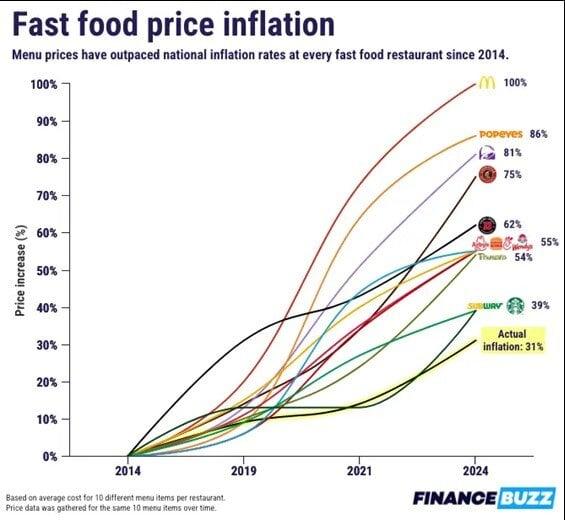Why Grocery Prices Remain High Despite Falling Inflation Rates
Although recent data indicates a slowdown in overall inflation, many American households still grapple with soaring grocery expenses. This apparent contradiction stems from the fact that headline inflation figures represent an average across diverse sectors, masking significant price fluctuations in essential goods. While costs for electronics, apparel, and fuel have somewhat stabilized, prices for fundamental food items like meat, dairy, and fresh fruits and vegetables continue to climb. This article delves into the multifaceted reasons behind sustained grocery price inflation, including supply chain bottlenecks, workforce shortages, and environmental challenges, all of which contribute to the financial pressure felt by consumers at the supermarket checkout.
Unpacking the Persistent Rise in Food Prices Amid Inflation Easing
Despite a general decline in inflation rates, grocery bills have not followed suit, remaining stubbornly high. This discrepancy arises because the overall inflation rate averages out price changes across various categories, obscuring the steep increases in food costs. For instance, while technology and clothing prices have softened, essential food categories have experienced notable hikes. According to the latest USDA data, prices for fresh produce have surged by 7.4% over the past year, meat and poultry by 9.1%, and dairy products by 8.2%. These increases are largely driven by ongoing disruptions in supply chains, labor market constraints, and adverse weather conditions affecting agricultural output.
Primary contributors to elevated grocery prices include:
- Supply chain disruptions: Lingering effects from the COVID-19 pandemic and geopolitical conflicts continue to hamper transportation and distribution networks.
- Labor market challenges: Difficulty in recruiting and retaining workers in farming, processing, and retail sectors has led to wage inflation, costs that are passed on to consumers.
- Climate-related impacts: Increasing frequency of droughts, floods, and other extreme weather events have diminished crop yields, pushing prices upward.
| Food Category | Price Increase (Year-over-Year) | Key Influencing Factors |
|---|---|---|
| Fresh Fruits & Vegetables | +7.4% | Weather disruptions & supply chain delays |
| Meat & Poultry | +9.1% | Labor shortages & feed cost increases |
| Dairy Products | +8.2% | Processing bottlenecks & transportation costs |
| Packaged Foods | +2.5% | Raw material price volatility |
How Supply Chain Obstacles Continue to Inflate Food Prices
Even as inflation eases in many sectors, the food supply chain remains fraught with challenges that keep grocery prices elevated. From farm production to retail shelves, multiple choke points persist. Labor shortages in agriculture and food processing reduce output and efficiency, while transportation delays caused by truck driver deficits and port congestion increase delivery times and freight costs. Additionally, scarcity of packaging materials has driven up costs, complicating logistics further. Energy price swings also add unpredictability to operational expenses, affecting everything from farm machinery to refrigerated transport.
Key supply chain hurdles impacting food costs include:
- Transportation delays: A shortage of truck drivers combined with congested ports leads to slower deliveries and higher shipping fees.
- Workforce deficits: Reduced labor availability in farming and processing sectors lowers productivity and inflates wages.
- Packaging shortages: Limited availability of essential packaging materials increases costs for producers and retailers.
- Energy cost fluctuations: Variable fuel prices affect the entire supply chain, from field operations to store deliveries.
| Supply Chain Component | Main Challenge | Effect on Costs |
|---|---|---|
| Transportation | Driver shortages and port congestion | Increased freight charges and delayed shipments |
| Labor | Insufficient farm and processing workers | Reduced output and higher wages |
| Packaging | Material scarcity | Elevated packaging expenses |
| Energy | Fuel price volatility | Fluctuating production and transport costs |
Changing Consumer Behaviors and Their Influence on Grocery Spending
While inflation rates may be trending downward, many consumers still feel the financial strain during grocery shopping trips. A significant factor is evolving consumer purchasing patterns. There is a growing inclination toward buying premium, organic, and specialty food products, which typically come with higher price points compared to conventional options. Moreover, lifestyle shifts have led shoppers to make smaller, more frequent purchases rather than buying in bulk, reducing opportunities for cost savings. This trend, combined with wage stagnation and smaller household sizes, contributes to higher overall grocery expenditures.
The table below outlines common consumer behaviors that affect grocery costs:
| Consumer Behavior | Effect on Grocery Expenses |
|---|---|
| Preference for Organic and Premium Products | Increases average cost per item |
| Frequent, Smaller Shopping Trips | Reduces bulk purchase savings |
| Impulse and Convenience Purchases | Elevates unplanned spending |
| Limited Meal Planning | Leads to inefficient and costly buying |
Understanding these consumer trends is crucial for retailers and policymakers aiming to tackle grocery affordability. Addressing price challenges requires not only monitoring inflation but also adapting to shifting shopper preferences and their cascading effects on supply chains and pricing strategies.
Practical Tips for Consumers to Manage Rising Grocery Costs
In the face of persistent grocery price increases, shoppers can adopt several strategies to ease the financial burden. Prioritizing seasonal and locally grown produce often yields fresher items at lower prices. Comparing unit prices rather than package sizes or brand names helps identify the best value. Purchasing non-perishable staples like rice, beans, and pasta in bulk remains an effective way to reduce costs over time.
Leveraging technology and store loyalty programs can also provide savings. Many retailers offer mobile apps, digital coupons, and personalized discounts that help consumers capitalize on promotions. Exploring alternative shopping venues such as farmers markets, discount grocers, and warehouse clubs can uncover additional bargains. By combining these approaches, households can better navigate high grocery prices without compromising on nutrition or quality.
Final Thoughts: Bridging the Gap Between Inflation Trends and Grocery Affordability
Although headline inflation figures suggest a cooling economy, the reality for many consumers is that grocery prices remain elevated. Persistent supply chain disruptions, labor shortages, and environmental challenges continue to exert upward pressure on food costs. The grocery aisle reflects a more nuanced economic picture, where macroeconomic improvements have yet to translate into tangible relief for everyday essentials. To ensure that declining inflation benefits American families, coordinated efforts from policymakers, industry leaders, and consumers are essential to address the root causes of sustained grocery price inflation.







